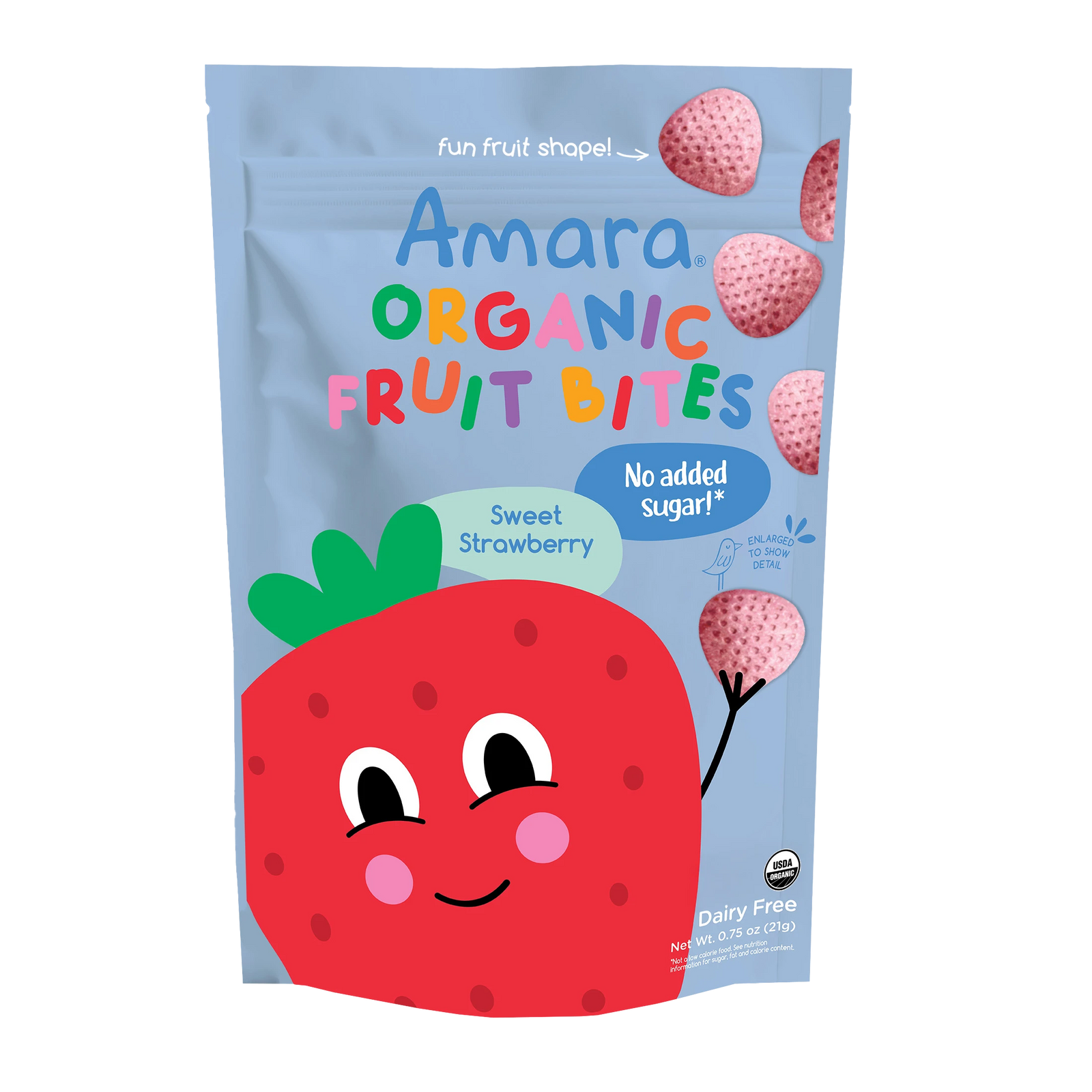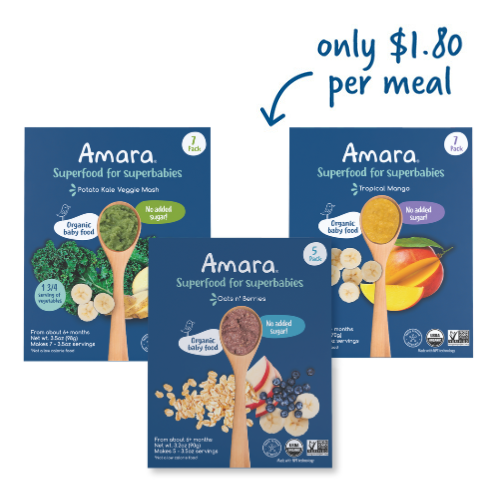
Homemade puree only stays good for 1-3 days in the refrigerator (1 day for meats and up to 3 days for veg/fruit) in a sealed container, so most parents find it convenient to make a large batch of baby food at once, portion it out, and freeze the leftovers. That way, they can pull out a meal, thaw it, and serve when it is mealtime. There are a few different ways you can go about this, and depending on your style, what you currently have in the house, your budget, and how much homemade baby food you plan on making, you can pick which method works for you or even mix and match.
1. Freezer Bags - This method is for when you are looking for the most minimal investment (maybe you only plan on trying this homemade baby food thing once), or you are in a situation with little equipment and need to improvise. Prepare your puree, portion it out how you like it, and put the puree directly into the freezer bag. Set the bag on its side, try to push out any excess air, and seal. Label bags with ingredients and date and stack them on top of each other in the freezer. They should lie and freeze flat in the bags.
Thawing method - Place in the refrigerator overnight or set bag in a warm water bath, or under warm running water, to bring to room temperature.
Pros & Cons - One drawback to this method is contact with plastic. Another is getting the puree in and out of the bags can be a messy endeavor and lead to wasting some of the purees from spillage or not being able to scrape off everything in the bags. There is also no quick, easy way to measure and portion out by ounces the right amount for your baby like in the freezer tray method.
2. Conventional Freezer Tray - The handy-dandy freezer tray method is simple. After your puree is made, divide it out in your freezer tray, filling each one close to the top, until you’ve used up your puree. Then put the tray in the freezer for 3-4 hours until puree is frozen. Finally, pop out cubes of food, put them in a freezer bag, label and date them.
Thawing method - The refrigerator method works well for these cubes. The night before, put a few cubes into the refrigerator to thaw, and they’ll be ready to serve the next day.
Pros & Cons - One big pro of this method is that it requires very little extra stuff or investment. You probably already have an ice cube tray for example and some freezer bags. Also it gives you ease and flexibility of pulling out one flavor at a time or a couple and with how you organize them. You can keep all of your veggie blends in one bag and your fruit purees in another for example. However, some drawbacks might be contact with plastic in the tray and bags, and having to transfer the food from tray to bag to another dish to thaw and serve.
3. Covered Silicone Freezer Tray - This method is similar to the freezer method above but does not require transferring the cubes to plastic bags. Since the silicone trays are covered, they double as the storage unit. The freezer trays have measured individual servings, and a pop on and off lid to keep purees fresh and protect from freezer burn and odors. Therefore, you simply measure out your servings, cover and freeze.
Thawing method - The thawing method is the same as the conventional method. The night before, you can pop out the amount of purees you’d like and put them in the refrigerator to be ready to serve the next day.
Pros & Cons - A few pros of this method is minimizing contact with plastic and potential BPAs, PVCS. Also, it skips the step of having to transfer the cubes to a plastic storage bag. The silicone trays are also bacteria resistant, can be conveniently stacked, and are dishwasher safe. One downside to this method is investing in the trays themselves. One tray we like from Wee Sprout goes for about $15 for a 12 cube tray. If you plan on freezing much more than 12 cubes at a time though, you’d have to invest in several trays, which can add up quickly. Also, after you’ve moved on from baby food, these trays may not have many other practical kitchen uses, making them an ideal item to get as a hand-me-down from a friend or on the second hand market.
4. Glass Baby Food Storage Containers - This method cuts out yet another step in the process. In this case, you fill up individual glass storage containers with lids and put them directly in the freezer. Then, you can also use that same container for both thawing and serving. With tempered, food grade glass, you can take a container out of the freezer, toss it into your diaper bag and go, making them perfect for travel or sending to daycare.
Thawing method - the containers themselves are made of thick glass which is also microwave-safe. You can transfer the containers to the fridge the night before, but you could also run them under warm water to thaw or even pop them into the microwave.
Pros & Cons - For the added convenience and safety of these containers, there is more of an upfront investment. For a set of 12 glass containers from Wee Sprout, it will run you about $30. Again, if you are planning on freezing a lot of baby meals, this becomes very pricey. However, these containers can continue to serve practical purposes in the kitchen beyond baby food. They become the perfect containers for your toddler and preschooler’s lunches and beyond. They are also handy for storing dips, sauces, and salad dressings in the fridge or freezer. One downside of these containers is that you cannot pop out the contents as easily as the silicone trays, making it harder to combine two purees together or add a puree into another food.
Ready to ditch the chopping, steaming, blending and freezing? At least some of the time? Try our 100% organic baby food blends, ready in seconds. Just add breast milk or water, stir and serve. It's that easy. Learn more HERE.
Take baby from milk monster to veggie lover with our Introduction to Baby Vegetables Pack.








Leave A Comment